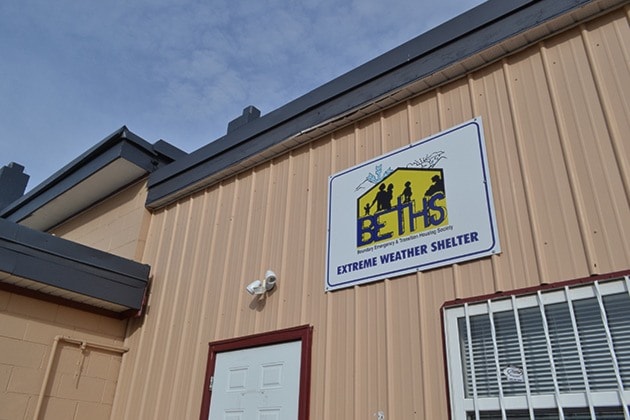Grand Forks’ only extreme weather shelter is getting set to open next week, but this year will not be without problems as the group combats funding woes and increased demand.
According to Steve McGibbon, project coordinator with the Boundary Emergency and Transition Housing Society (BETHS), the shelter’s “bed nights” have doubled every year since the shelter opened in 2010. A bed night is a number that reflects total people using the shelter. Whether one person attends for 10 nights, or 10 people attend on one night, that is reflected as 10 “bed nights.” Last year, the shelter had almost 1,000.
With that comes the added challenge of needing more staff to supervise the shelter, combined with a lack of increase in funding from BC Housing. The group is currently looking for ways to fundraise to keep the shelter open—but if unsuccessful, the shelter may be forced to close early.
BETHS is considered a “low barrier” shelter, meaning that guests who have been using drugs and alcohol are permitted on the premises—although there is absolutely no drug or alcohol use on site. This approach makes the shelter truly accessible to those needing a warm place to sleep, McGibbon said.
“It comes from compassion. It is a tough thing to do, be low barrier. But it is the board’s view that you’ll freeze to death whether you have been drinking or not. So we do the best we can to bring them in,” he said. McGibbon said BETHS is pretty much the only shelter between Nelson and Hope, and the nearest low-barrier shelter could be even further than that.
McGibbon said the shelter dates (this year from Nov. 1 – March 31) are dictated by BC Housing, although they can change in the event of extreme weather earlier or later in the year. Contrary to popular belief, McGibbon said most guests at the shelter are local, not transient.
“I’d say 90 per cent of our guests are in town all year round. It is not people coming, and thinking ‘oh Grand Forks has a shelter, lets go there.’ This is not a great place to be homeless. There is one shelter and if you screw up you are out and have nowhere.”
Explaining a typical night at the shelter, McGibbon said residents check in when the facility opens at 8 p.m., a process that includes paperwork and a contract informing them of the rules of the shelter. They also check their belongings into a locked box they don’t have access to—including any drugs or alcohol they may have, as using is strictly forbidden and will get them removed.
From there, guests can take a hot shower, do laundry and watch basic cable, as well as grab a snack or a coffee. Lights go out at 11 p.m. and come back on at 7 a.m. the next morning, and the shelter closes at 8 a.m. when partnering service Whispers of Hope opens next door. While the shelter is open seven days a week, Whispers is closed on Sundays.
This year the group faces a daunting lack of funding, stemming from increased demand for the service and no increase in funding from BC Housing for shelters province-wide. The shelter has also hired a second staff to work the shelter this year.
The shelter is low-barrier in keeping with the mandate of BETHS, but the same thing that makes the shelter accessible to those who need it poses risks for staff and volunteers.
“In years past we had one paid staff and one volunteer, and that allowed us to run until the end of the season. That was fine when we had two to five guests per night. Now that we are nine [or more], we have found that it is too much for the volunteers,” McGibbon said. “It is a tough shelter because we are a low-barrier shelter. We will take people in even if they are high or had a few drinks or have other issues. We still take them in.
“We have decided the volunteer route is not fair to the volunteer and not safe for the staff, so this year we are going with two staff.”
Demand is increasing all the time, McGibbon said, because homelessness is on the rise. The problem of extreme weather continues beyond the winter—extreme heat is just as bad. Dealing with the extreme winter weather is only part of what needs to be a bigger solution, he said.
“Let me put it this way. The emergency weather shelter is a band-aid. The next phases are transitional housing and subsidized housing,” McGibbon said. “It’s the old ‘teaching a man to fish.’ Right now we’re just giving fish, but we want to teach them to fish. That is the next step, and having a full-time facility is a good start.”
McGibbon said anyone wanting to get involved can call him at 250-443-9236 or the shelter (after 8 p.m.) at 250-442-2006.

